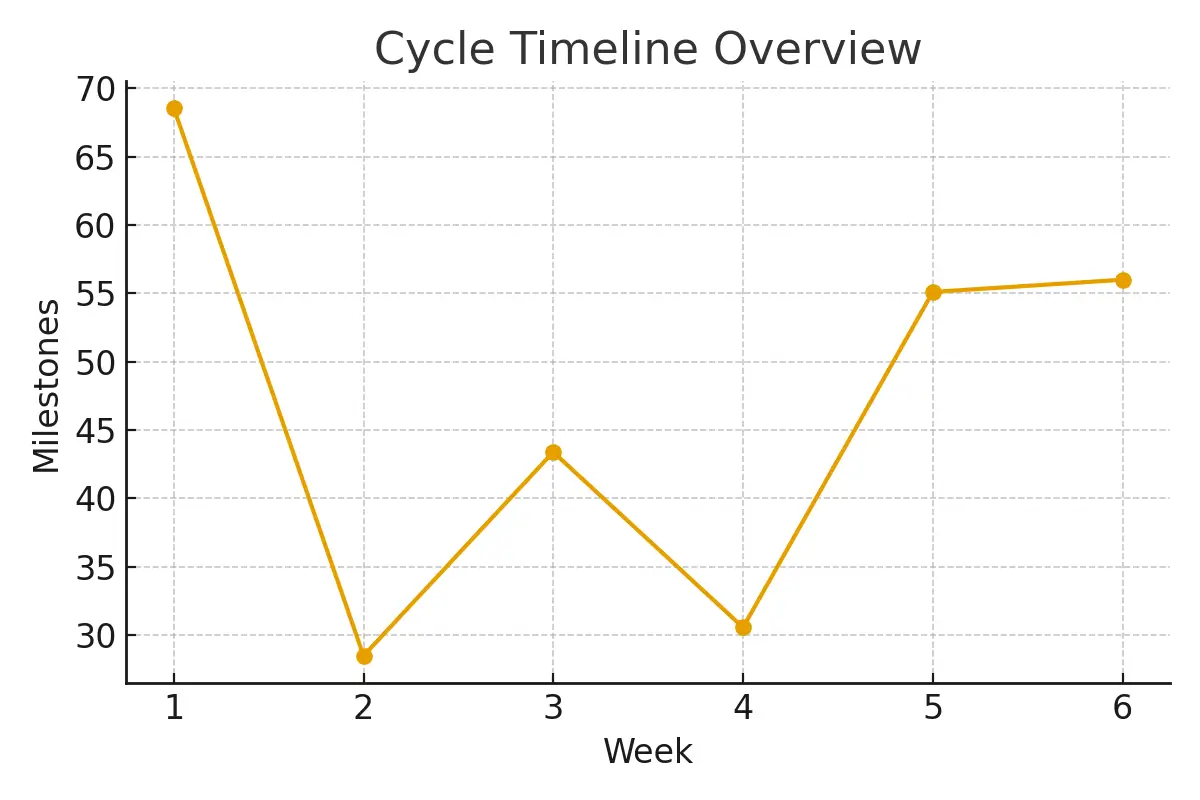
When navigating your IVF journey, understanding the nuances of treatment decisions can greatly influence both outcomes and peace of mind. One such decision point that many fertility patients encounter is choosing between a single trigger or a dual trigger protocol for ovulation.
This article dives deep into the pros and cons of both methods, how they impact success rates, who benefits most, and how timing, cost, and clinic coordination can simplify your path to conception — especially for patients in NYC and other major fertility hubs.

Understanding the Difference: Single vs Dual Trigger
Single Trigger
A single trigger uses one hormone — usually hCG (human chorionic gonadotropin) or, in some cases, Lupron (GnRH agonist) — to stimulate egg maturation.
hCG mimics the natural LH surge, whereas Lupron induces the body’s own LH and FSH release. Single triggers are often used for patients with stable hormone levels and predictable ovarian responses.
Dual Trigger
A dual trigger combines both hCG and Lupron, offering a two-pronged approach. The Lupron provides a natural hormonal surge, while hCG sustains the maturation process. This strategy has shown benefits in improving egg quality, embryo maturity, and even implantation potential in certain patient groups.
Where This Step Fits in the IVF Journey
The trigger shot typically comes near the end of the stimulation phase — after several days of injectable medications to grow follicles. Once the follicles reach optimal size (usually 17–20 mm), your fertility specialist determines the trigger timing.
- A single trigger is ideal for standard responders.
- A dual trigger may be used in cases of poor egg quality, prior low maturity rates, or patients with diminished ovarian reserve.
The timing of retrieval (generally 34–36 hours post-trigger) is then carefully aligned to maximize egg viability and fertilization success.
Eligibility Signals — Who Benefits Most?
Determining whether to use a single or dual trigger depends on key clinical indicators:
-
Single Trigger:
- Good ovarian response
- Consistent hormone levels
- Prior successful cycles
- Minimal risk of premature ovulation
-
Dual Trigger:
- Low oocyte maturity in past cycles
- Poor fertilization rates
- High AMH but low egg quality
- History of empty follicle syndrome
- Over- or under-response to stimulation
Dual trigger protocols can sometimes make the difference between retrieving immature eggs and collecting optimal ones ready for fertilization — a major boost for overall IVF success rates.
Step-by-Step: Timing and Checkpoints
- Monitoring Phase: Ultrasound and hormone tracking guide medication dosing.
- Follicle Maturity Check: When follicles hit target size, the doctor schedules the trigger.
- Trigger Shot: Administered exactly as instructed (usually evening).
- Retrieval Timing: Scheduled 34–36 hours post-trigger for best results.
- Egg Assessment: Embryologist evaluates maturity (MII stage).
- Fertilization & Embryo Growth: Lab conditions foster healthy development.
- Embryo Transfer: Typically 3–5 days post-retrieval.
Pros and Cons of Single vs Dual Trigger
Single Trigger — Pros
- Simplicity: Fewer medications, easier scheduling.
- Lower cost: Only one drug needed.
- Predictable timing: Commonly used and well-studied.
- Good outcomes in normal responders.
Single Trigger — Cons
- It may yield fewer mature eggs in some patients.
- Less flexibility if previous cycles showed low oocyte maturity.
- Potentially lower fertilization or embryo quality in certain profiles.
Dual Trigger — Pros
- Improved egg maturity: More MII-stage eggs retrieved.
- Better synchronization: Balances LH and hCG effects.
- Enhanced fertilization potential.
- Reduced empty follicle risk.
- May increase pregnancy rates in patients with suboptimal responses.
Dual Trigger — Cons
- Slightly higher cost due to additional medication.
- More monitoring is needed to perfect the timing.
- Possible side effects: bloating, mood changes, mild OHSS risk (though usually less than hCG-only).
Practical Costs with Line-Item Examples
IVF treatment costs vary widely by location and clinic. In NYC, the average IVF cycle ranges between $12,000–$18,000, excluding medications.
Let’s break down a simplified example for clarity:
| Item | Approximate Cost (USD) |
| Stimulation Medications | $4,000–$6,000 |
| Trigger Medications (Single) | $150–$500 |
| Trigger Medications (Dual) | $400–$700 |
| Egg Retrieval & Lab Fees | $6,000–$8,000 |
| Anesthesia | $800–$1,200 |
| Embryo Transfer | $3,000–$5,000 |
| Genetic Testing (Optional) | $3,000+ |
While dual triggers cost more upfront, they may reduce the need for additional cycles, making the overall cost-per-successful-outcome lower.
Outcome Drivers — What You Control vs What You Monitor
-
You Control:
-
-
- Medication adherence
- Diet and hydration
- Sleep, stress management
- Timing accuracy for injections
-
-
You Monitor:
-
- Hormone levels
- Follicle size via ultrasound
- Egg quality and maturation rate
- Embryo development
Success in IVF often comes from the harmony between patient discipline and clinic precision.
Questions to Ask Your Clinic
- Which trigger protocol do you recommend for my case—and why?
- What were my oocyte maturity and fertilization rates in past cycles?
- What are the medication names, doses, and costs for each option?
- How precise is the retrieval scheduling after the trigger?
- Can we customize my protocol based on my response mid-cycle?
- How will trigger timing be communicated to me?
Expert Insight
“Protect timing and keep plans simple—quality improves when noise goes down.”
— Clinical Team, Surrogacy4all NYC
This quote underlines a critical IVF truth — sometimes, simplifying steps and synchronizing schedules leads to better, more predictable outcomes.
Patient Case Study
A couple from NYC faced repeated IVF cycles with low egg maturity rates. After switching from a single trigger to a dual trigger approach under guidance from a Surrogacy4all partner clinic, they retrieved 14 eggs, with 11 mature and 8 successfully fertilized.
This adjustment improved their embryo quality and reduced treatment time — demonstrating how small protocol shifts can make a big difference in success rates.
Testimonials
- “The steps finally made sense.” — A.&J., Manhattan
- “Costs were clear; no surprise bills.” — L., Hoboken
- “Nurses replied fast with practical coaching.” — K.&V., Queens
These stories highlight the value of clear guidance, transparent pricing, and patient-centered communication throughout the fertility journey.
Frequently Asked Questions
Q: Is this medical advice?
Ans: No — this information is for educational purposes to guide informed discussions with your fertility specialist.
Q: How many IVF cycles should I plan for?
Ans: Think in ranges; cumulative success rates improve significantly over multiple cycles.
Q: What drives IVF cost the most?
Ans: Medications, genetics testing, anesthesia, and total cycle count.
Conclusion
Choosing between a single vs dual trigger comes down to your unique fertility profile, prior cycle performance, and your clinic’s expertise in personalized stimulation protocols.
While single triggers remain standard for many, dual triggers can unlock higher egg maturity and improved outcomes for select patients. Ultimately, the best results come from customization, timing precision, and a supportive clinical team that understands your goals.
At Surrogacy4all, our NYC-based fertility network helps patients navigate every IVF step — from diagnostics to medication timing — with compassion, transparency, and evidence-based care. Whether you’re beginning your journey or optimizing your next cycle, we ensure your experience is simpler, more predictable, and focused on success.
- Free 15-minute nurse consult (212) 661-7673
- Upload your lab results for a second opinion
- Get a cost breakdown tailored to your case

Dr. Kulsoom Baloch
Dr. Kulsoom Baloch is a dedicated donor coordinator at Egg Donors, leveraging her extensive background in medicine and public health. She holds an MBBS from Ziauddin University, Pakistan, and an MPH from Hofstra University, New York. With three years of clinical experience at prominent hospitals in Karachi, Pakistan, Dr. Baloch has honed her skills in patient care and medical research.




